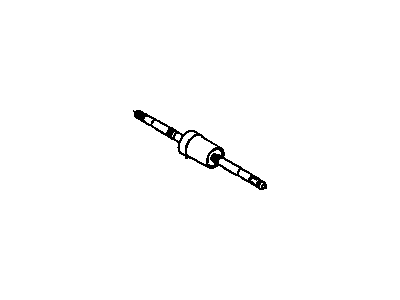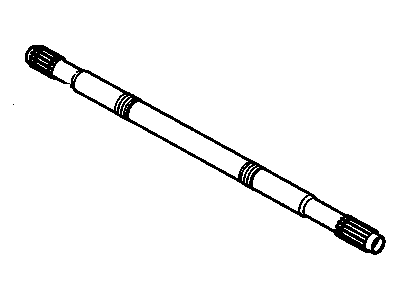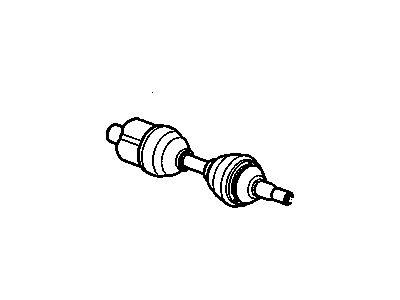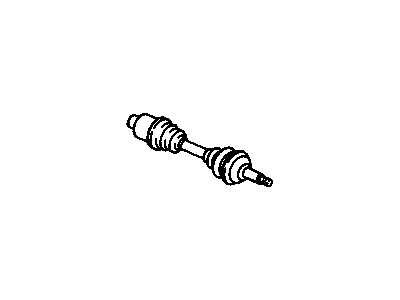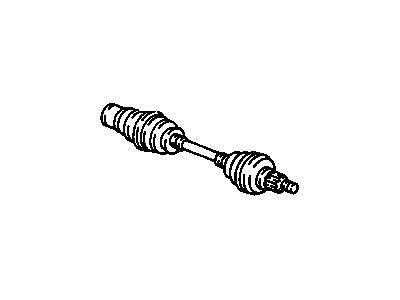My Garage
My Account
Cart
Genuine Cadillac Deville Axle Shaft
Car Axle Shaft- Select Vehicle by Model
- Select Vehicle by VIN
Select Vehicle by Model
orMake
Model
Year
Select Vehicle by VIN
For the most accurate results, select vehicle by your VIN (Vehicle Identification Number).
18 Axle Shafts found
Cadillac Deville Damper (Painted) Shaft Assembly
Part Number: 7848444$83.37 MSRP: $305.53You Save: $222.16 (73%)Cadillac Deville Front Wheel Drive Shaft
Part Number: 7846169$50.43 MSRP: $90.46You Save: $40.03 (45%)Ships in 1-3 Business DaysCadillac Deville Front Wheel Drive Shaft Kit
Part Number: 26078534$102.48 MSRP: $876.38You Save: $773.90 (89%)Ships in 1-2 Business Days
Cadillac Deville Axle Shaft
Cadillac DeVille automobile's Axle Shaft is a vital part that connects the differential with the drive wheels, thus permitting independent rotation, which is consequential in providing adequate traction. The key varieties of Axle Shafts include the solid axles incorporated into the trucks and the rear wheel drive cars as well as the halfshafts for the independently-suspended vehicles. Differential and axle shafts are carried on solid axles and half-shafts transmit power from the transaxles to the wheels. It is a fact that there are various conditions of the axle shafts include, bent shafts, worn bearings and even if the boots are torn they can cause noise and vibration besides loss or lack of lubricant. Thus, the Axle Shaft is crucial for supporting the car's weight, transmitting torque, and ensuring proper wheel position in Cadillac DeVille automobiles.
Each OEM Cadillac Deville Axle Shaft we offer is competitively priced and comes with the assurance of the manufacturer's warranty for the part. Furthermore, we guarantee the speedy delivery of your orders right to your doorstep. Our hassle-free return policy is also in place for your peace of mind.
Cadillac Deville Axle Shaft Parts Questions & Experts Answers
- Q: How do you remove the front drive axle on Cadillac DeVille?A: Begin by taking off the wheel cover and using a long breaker bar to unscrew the hub nut. Then, release the lug nuts on the wheels, lift up the front part of your vehicle and place it firmly on jack stands. Put on parking brakes and block wheels to keep them from rolling away. Remove the front wheel. Next, remove the axle shaft/hub nut by inserting a screwdriver through the caliper and into one of its cooling vanes on brake disc and rotate anti-clockwise once it has been unscrewed from its thread after which it can be removed along with washer. Position an oil pan near transaxle below differential to trap any loss of fluid during withdrawal of axle shaft. Take out caliper and disc then wire support caliper aside. On vehicles fitted with road-sensing suspension, disconnect sensor from lower control arm at ball stud. Undo strut-to-steering knuckle bolts divide strut from steering knuckle. Press down on end of drive shaft until drive shaft comes out through hub bearing. Now safely remove the axle shaft from transaxle whenever you are ready for it. The new axle shaft should be lowered in place while supporting both CV joints as lubricate differential seal with multipurpose grease. Splined end of inner CV joint is inserted into differential side gear so that it sits properly. Outer CV joint splines are lightly coated with multi-purpose grease; steering knuckle is pulled away from vehicle's body. Stub axle is installed into hub, tighten initially to 70 ft-lbs while preventing the discs from turning. While lowering vehicle further, tighten up axle shaft/hub nut more then tighten wheel lug nuts before replacing wheel cover. Last but not least, check the level of lubricant in transaxle and add more if necessary.
Related Cadillac Deville Parts
Browse by Year
2005 Axle Shaft 2004 Axle Shaft 2003 Axle Shaft 2002 Axle Shaft 2001 Axle Shaft 2000 Axle Shaft 1999 Axle Shaft 1998 Axle Shaft 1997 Axle Shaft 1996 Axle Shaft 1995 Axle Shaft 1994 Axle Shaft 1993 Axle Shaft 1992 Axle Shaft 1991 Axle Shaft 1990 Axle Shaft 1989 Axle Shaft 1988 Axle Shaft 1987 Axle Shaft 1986 Axle Shaft 1985 Axle Shaft 1984 Axle Shaft 1983 Axle Shaft 1982 Axle Shaft

